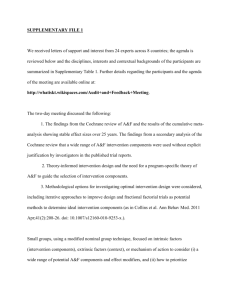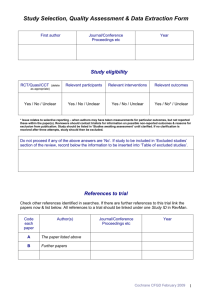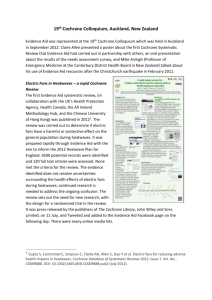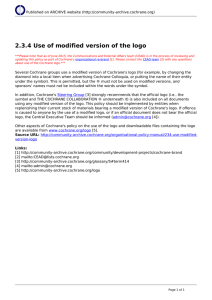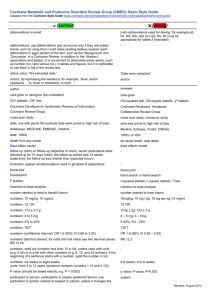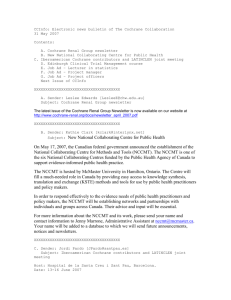Defining a review question - exercise (PICO table)
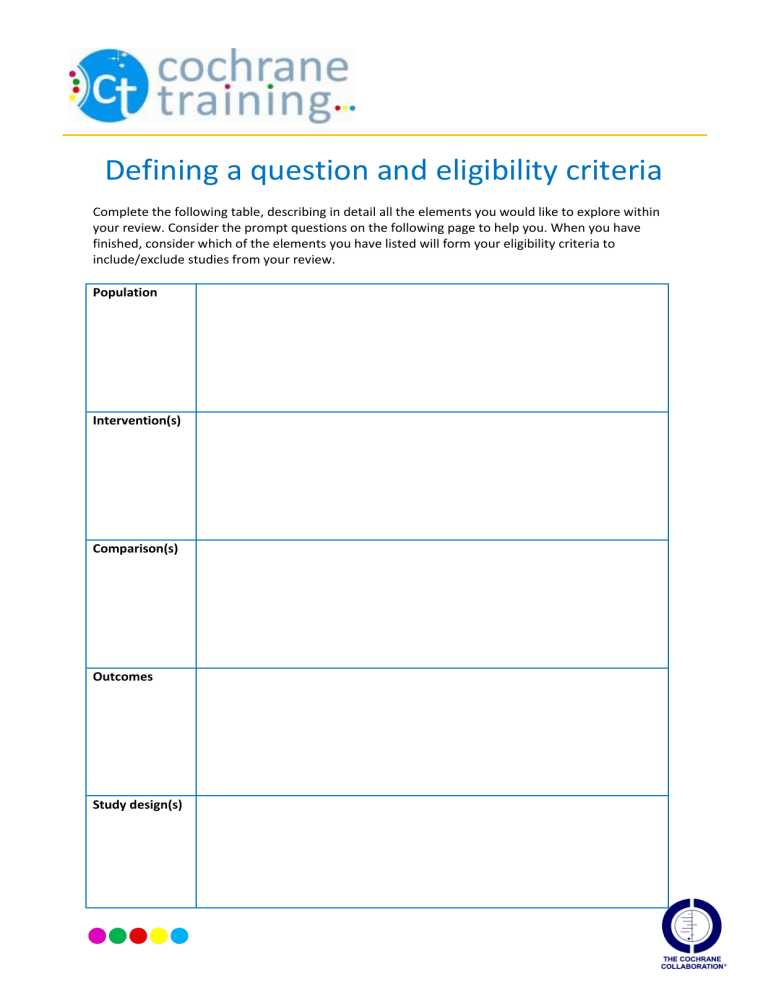
Defining a question and eligibility criteria
Complete the following table, describing in detail all the elements you would like to explore within your review. Consider the prompt questions on the following page to help you. When you have finished, consider which of the elements you have listed will form your eligibility criteria to include/exclude studies from your review.
Population
Intervention(s)
Comparison(s)
Outcomes
Study design(s)
Prompt questions to develop your eligibility criteria
Population How is the disease/condition defined?
What are the most important characteristics that describe the participants relevant to your review?
Are there any relevant demographic factors? (e.g. age, sex, ethnicity)
What is the setting? (e.g. hospital, community)
Who should make the diagnosis?
Are there any co-morbidities to be excluded?
Are there any other types of people who should be excluded or considered in the review
(because they are likely to react to the intervention in a different way)?
How will studies involving only a subset of relevant participants be handled?
Intervention(s) Does the intervention have variations (e.g. dosage, components, mode of delivery, personnel, frequency, duration, timing)?
Are all variations to be included (e.g. is there a minimum dose or components without which the intervention may not be expect to work in the same way)?
How will trials including the intervention of interest combined with another intervention
(co-intervention) be handled?
Is the intervention provided or accessed differently in different contexts?
Comparison(s) What are you interested in comparing the intervention to (e.g. an active intervention, no intervention or placebo, any available comparison)? This depends on the primary question of the review.
What is the usual alternative to your intervention of interest in practice?
If comparing to a specific intervention, describe in detail as above.
Outcomes What are the important outcomes that you plan to measure in your review?
Will the outcomes form part of the selection criteria?
Which will be your primary outcomes (maximum of 3)?
Which will be your secondary outcomes?
Which primary and secondary outcomes will be your main outcomes (maximum of 7) to be included in summaries of the completed review such as your Abstract, Plain Language
Summary and Summary of Findings Table? These outcomes should be essential for decision-making, and have an emphasis on patient-important outcomes.
Have you included possible adverse effects?
How should the outcomes be measured (e.g. validated tools)?
Are there important time points at which outcomes should be measured (e.g. long enough to expect an observable effect)?
Have you included outcomes relevant to all potential decision-makers?
Study design(s) Most Cochrane reviews include randomised controlled trials as the most appropriate design to answer questions about the effects of interventions. Do you plan to include other study designs (e.g. quasi-randomised studies, non-randomised studies)?
If so, which designs will you include, and what is your rationale?
Based on O’Connor D, Green S, Higgins JPT (editors). Chapter 5: Defining the review question and developing criteria for including studies . In: Higgins JPT, Green S (editors), Cochrane Handbook of Systematic Reviews of Intervention.
Version 5.0.1 (updated September 2008). The Cochrane Collaboration, 2008. Available from www.cochranehandbook.org.


